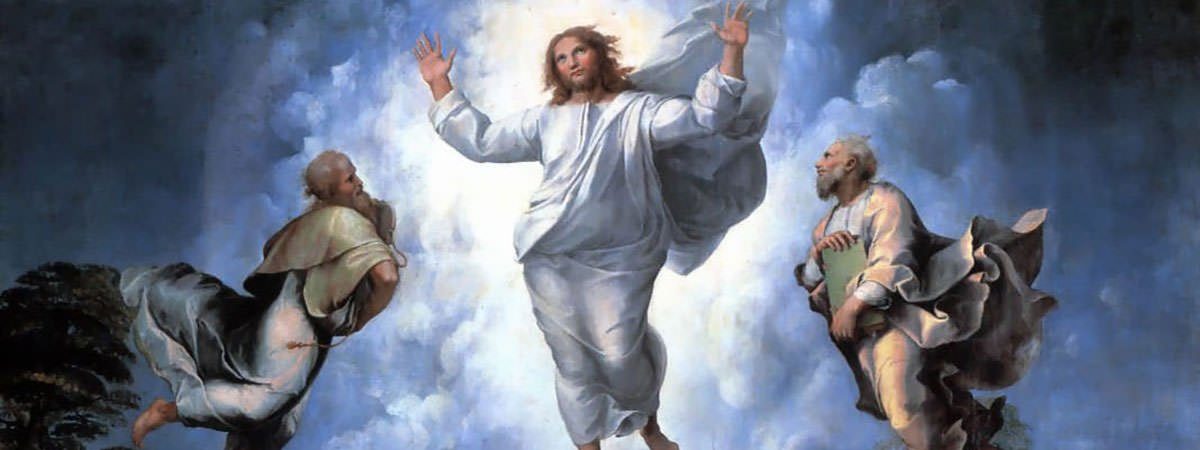Jesus Christ, the central figure of Christianity, has been depicted numerous times in paintings during the course of western art. Renaissance was movement in Europe from the 14th to the 17th century which was marked by renewed interest in ancient Greco-Roman culture. Religious paintings were very common in the Renaissance and several paintings from this age feature on our list. Many incidents from the life of Jesus have been captured by numerous artists of different artistic ages. While Da Vinci’s Last Supper captures the moment when Jesus tells his disciples that one of them would betray him; Caravaggio’s Supper at Emmaus depicts the moment when the resurrected Jesus first revealed himself to two of his disciples. Christ on the Cross has also been a favored theme of artists and it features on three of the paintings on our list: Christ Crucified by Diego Velazquez; The Yellow Christ by Paul Gauguin; and Christ of Saint John of the Cross by Salvador Dali. Here are the 10 most famous paintings featuring Jesus Christ.
#10 Christ Crucified

| Location: | Museo del Prado, Madrid |
| Artist: | Diego Velazquez |
| Year: | 1632 |
Diego Velazquez was a Spanish artist active during the 17th century who is considered the foremost figure of the Spanish Golden Age. He is highly regarded for his portraits and he was the official painter of King Philip IV. Painted by Velazquez during his middle period, this painting depicts Jesus on the cross immediately after his death. A notable point in the painting is that it lacks any narrative elements apart from the cross. A work of tremendous originality and masterly in its fusion of serenity, dignity and nobility, Christ Crucified is considered a turning point in the artistic development of Velazquez. It is the most renowned religious painting by the artist and has inspired much literature, notably Miguel de Unamuno’s poem El Cristo de Velazquez.
#9 The Yellow Christ
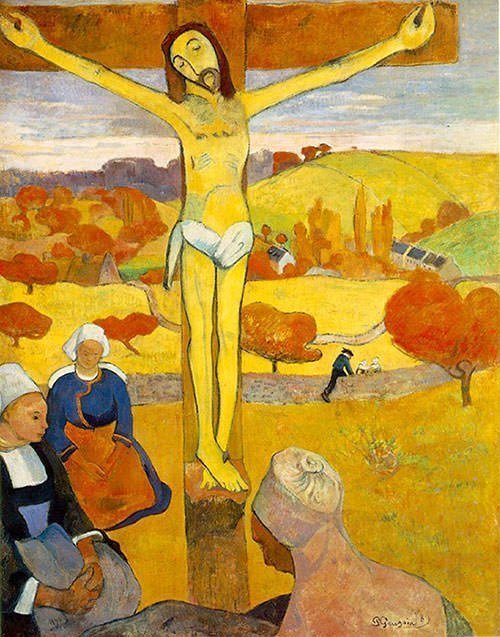
| Location: | Albright–Knox Art Gallery, Buffalo, New York |
| Artist: | Paul Gauguin |
| Year: | 1889 |
Active primarily during the 19th century, Paul Gauguin was a French artist who is now considered among the most important painters of the art movement Post-Impressionism, which extended Impressionism while rejecting its limitations. Along with another painting by Gauguin titled The Green Christ, this painting is among the first and most important works of Symbolism in painting. The Yellow Christ shows the crucifixion of Christ taking place in 19th century northern France while women are gathered in prayer. The composition is noted for various symbolism, like the man running in the background reflects the 19th century desire to run away from city life and get back to the “primitive”, and much simpler life that was before. Apart from symbolism, the Yellow Christ is a culmination of the “synthetist” style of Gauguin. It has been created using flat planes, intense colors and bold circumscribing outlines.
#8 Supper at Emmaus

| Location: | National Gallery, London |
| Artist: | Caravaggio |
| Year: | 1601 |
Caravaggio was an Italian artist whose paintings combine a realistic observation of the human state, both physical and emotional, with a dramatic use of lighting. He is regarded as one of the most influential artists in western art and his works had a formative influence on the Baroque school of painting. One of the most famous religious paintings created by Caravaggio, Supper at Emmaus depicts the moment when the resurrected Jesus Christ first revealed himself to two of his disciples; most probably Luke and Cleopas; in the town of Emmaus. The painting in fact captures the exact moment when the two apostles realize that they are witnessing an unimaginable miracle. Christ has been shown without a beard and his flowing robes cover any indications of the wounds he suffered during the crucifixion.
#7 Salvator Mundi
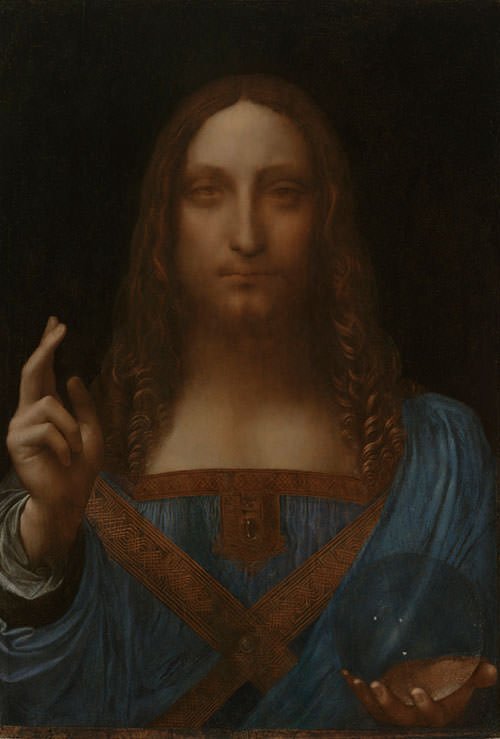
| Location: | Private Collection |
| Artist: | Leonardo da Vinci |
| Year: | 1510 |
Leonardo Da Vinci was an Italian artist who is now regarded as a multi-talented genius. But for four centuries after his death his fame rested primarily on his laurels as a painter and, even today, he is regarded as one of the greatest painters in the history of western art. The first documented owner of this painting was King Charles I of England. It was auctioned by the Duke of Buckingham’s son in 1763 and acquired in 1900 by British art collector Sir Francis Cook, whose descendants sold it at an auction for merely £45. It was only in the first decade of the 21st century that the artwork was restored and recognized as a work of Da Vinci, thus giving it widespread attention. Salvator Mundi depicts Jesus Christ as Salvator Mundi (Savior of the World). It shows him in Renaissance clothing while giving a benediction with his raised right hand; and his left hand holding a crystal sphere.
#6 Transfiguration
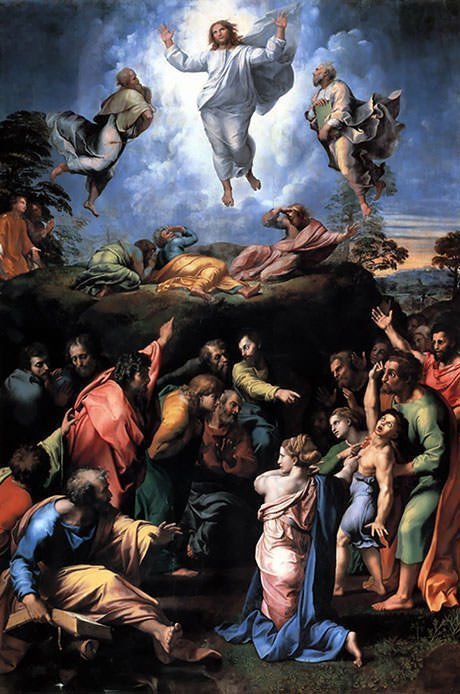
| Location: | Pinacoteca Vaticana, Vatican City |
| Artist: | Raphael |
| Year: | 1520 |
Raphael was one of three great masters of High Renaissance art along with Michelangelo and Leonardo da Vinci. The Transfiguration is the last painting created by him. It is divided into two distinct parts. The upper half of the painting shows the transfiguration of Christ with the prophets Elijah and Moses on either side of him. In the lower portion, the Apostles are unsuccessfully trying to rid a possessed boy of demons. In the upper section, the transfigured Christ is shown successfully ridding the possessed boy from evil. The painting can be interpreted as depicting the contrast between god and man; with the upper part pure and symmetrical, and the lower part dark and chaotic. To Napoleon, Raphael was simply the greatest of Italian artists and The Transfiguration his greatest work while art historian Giorgio Vasari calls the painting Raphael’s “most beautiful and most divine” work.
#5 Christ of Saint John of the Cross

| Location: | Kelvingrove Art Gallery and Museum, Glasgow |
| Artist: | Salvador Dali |
| Year: | 1951 |
Salvador Dali is widely considered the most influential artist of the art movement Surrealism. This painting is known as Christ of Saint John of the Cross because its design is based on a drawing by the 16th-century Spanish friar John of the Cross. The composition consists of a triangle, which is formed by the arms of Christ and the horizontal of the cross; and a circle, which is formed by the head of Christ. The triangle might be seen as a reference to the Holy Trinity while the circle may represent unity, that is, all things exist in the three. Although the painting is a representation of crucifixion, it is devoid of nails and blood. According to Dali, the inspiration of the painting came to him through a cosmic dream, in which he was convinced that depiction of nails and blood would mar his portrayal of Christ. Christ of Saint John of the Cross was voted Scotland’s favorite painting in a 2006 poll. It is one of the most famous works of one of the leading modern artists; and is considered by many to be the greatest religious painting of the 20th century.
#4 Sistine Madonna

| Location: | Gemäldegalerie Alte Meister, Dresden |
| Artist: | Raphael |
| Year: | 1512 |
Raphael’s art is known for sweetness and clarity of form, serenity, harmony, perfection and visual brilliance. His popularity during his time was primarily due to the numerous pictures he painted of Madonna and Christ Child. Sistine Madonna depicts the Madonna holding the Christ Child; and flanked by Saint Sixtus and Saint Barbara. Also there are two winged cherubs beneath Mary who are perhaps the most famous cherubs depicted in any picture. Such is there popularity that there are many legends regarding how Raphael painted them and they have been reproduced on everything from paper table napkins to umbrellas. Sistine Madonna is considered one of the finest paintings by many notable critics and it is especially popular in Germany where it “has been hailed as ‘supreme among the world’s paintings’ and accorded the epithet ‘divine'”.
#3 The Last Judgment
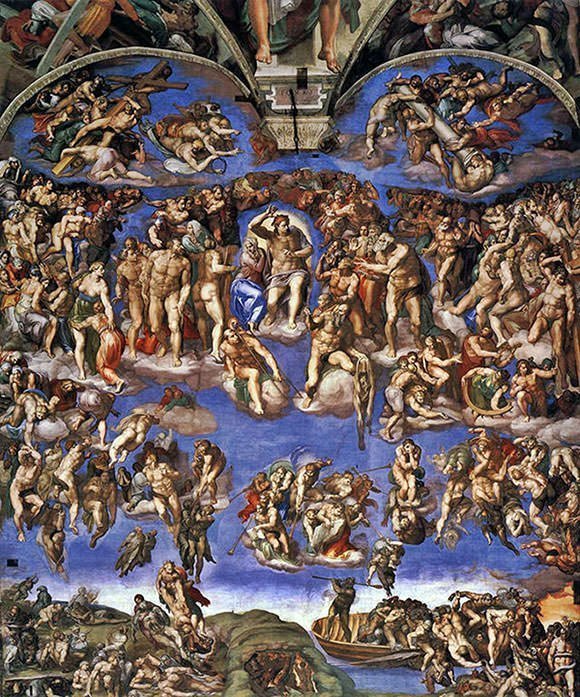
| Location: | Sistine Chapel, Vatican City |
| Artist: | Michelangelo Buonarroti |
| Year: | 1541 |
Michelangelo exerted an unparalleled influence on the development of art in the west. He is widely considered the greatest sculptor ever and, though he had low opinion of painting, he is also regarded as one of the greatest painters. The Last Judgment is one of the most influential works in fresco in the history of Western art. Painted on the altar wall of the Sistine Chapel in Vatican City, it depicts the Second Coming of Christ (a future return of Jesus to earth) and the final and eternal judgment by God of all humanity. Jesus is shown in the center of the painting and is surrounded by prominent saints; while the Resurrection of the Dead and the Descent of the Damned into Hell is shown in the zone below. Though one of the most renowned religious paintings, The Last Judgment created much controversy. Among other things, Michelangelo was accused of mixing figures from pagan mythology into depiction of a Christian subject matter and for pursuing artistic effect over following the scriptural description of the event.
#2 The Calling of St Matthew
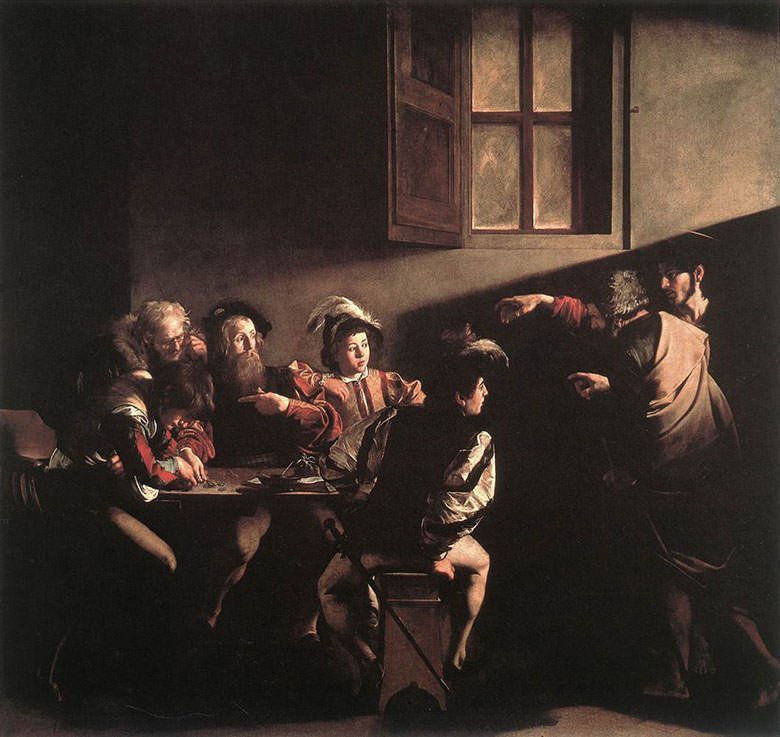
| Location: | San Luigi dei Francesi, Rome |
| Artist: | Caravaggio |
| Year: | 1600 |
Saint Matthew was one of the twelve apostles of Jesus and, according to Christian tradition, one of the four Evangelists. Matthew was initially a tax collector and Jesus Christ found him sitting at the tax collector’s booth. “Follow me”, Jesus told him, and Matthew got up and followed him. This painting depicts the moment at which Jesus inspires Matthew to follow him. Caravaggio is one of the most influential artists in European art history. Among other things; he painted from life, without drawings; and developed a technique called tenebrism, which was marked by the use of violent contrasts of light and dark. This helped him to create paintings with high drama and emotional intensity. The Calling of St Matthew was an immediate sensation when it was first displayed and it remains one of the most famous works by the artist.
#1 The Last Supper
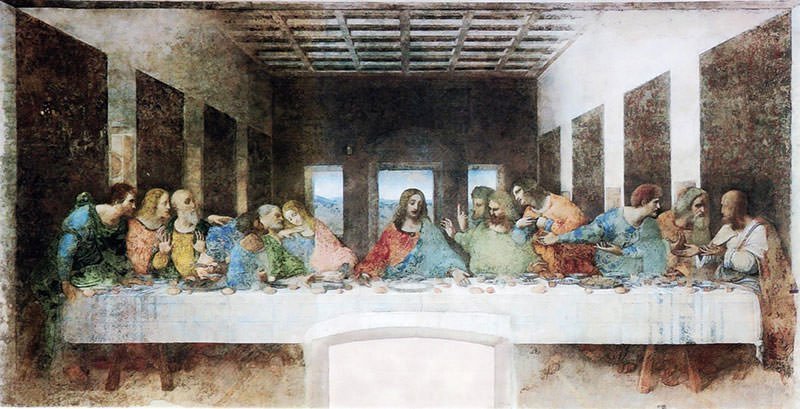
| Location: | Santa Maria delle Grazie, Milan |
| Artist: | Leonardo da Vinci |
| Year: | 1498 |
The most famous artistic achievement of Leonard da Vinci after the Mona Lisa, this painting represents the scene of The Last Supper of Jesus with his disciples. In it, Leonardo masterfully depicts the bewilderment and confusion that occurs among the disciples of Jesus when he announces that one of them would betray him. Leonardo’s detailed knowledge of anatomy, light, botany and geology; his interest in how humans register emotion in expression and gesture; and his subtle gradation of tone; all come together to make this painting among the most revered and famous religious paintings of all time. Some people believe that the person to the right of Jesus in the painting is not John the Apostle, but a woman named Mary Magdalene. This belief plays a central role in Dan Brown’s fiction novel The Da Vinci Code. The Last Supper is in all probability the most famous painting featuring Jesus Christ.

